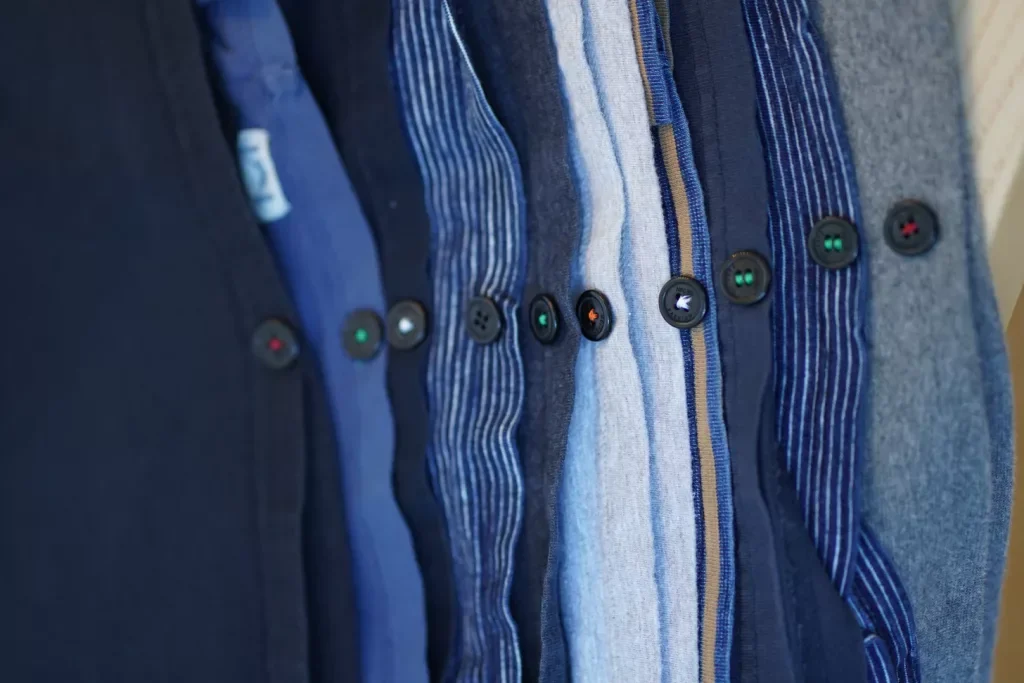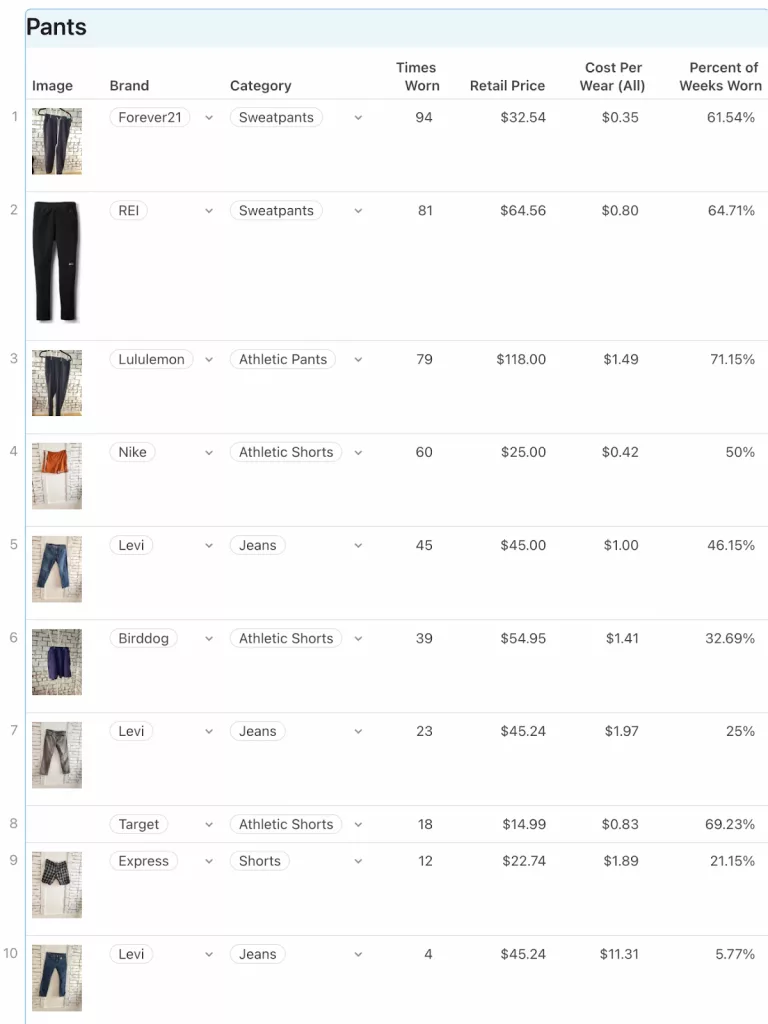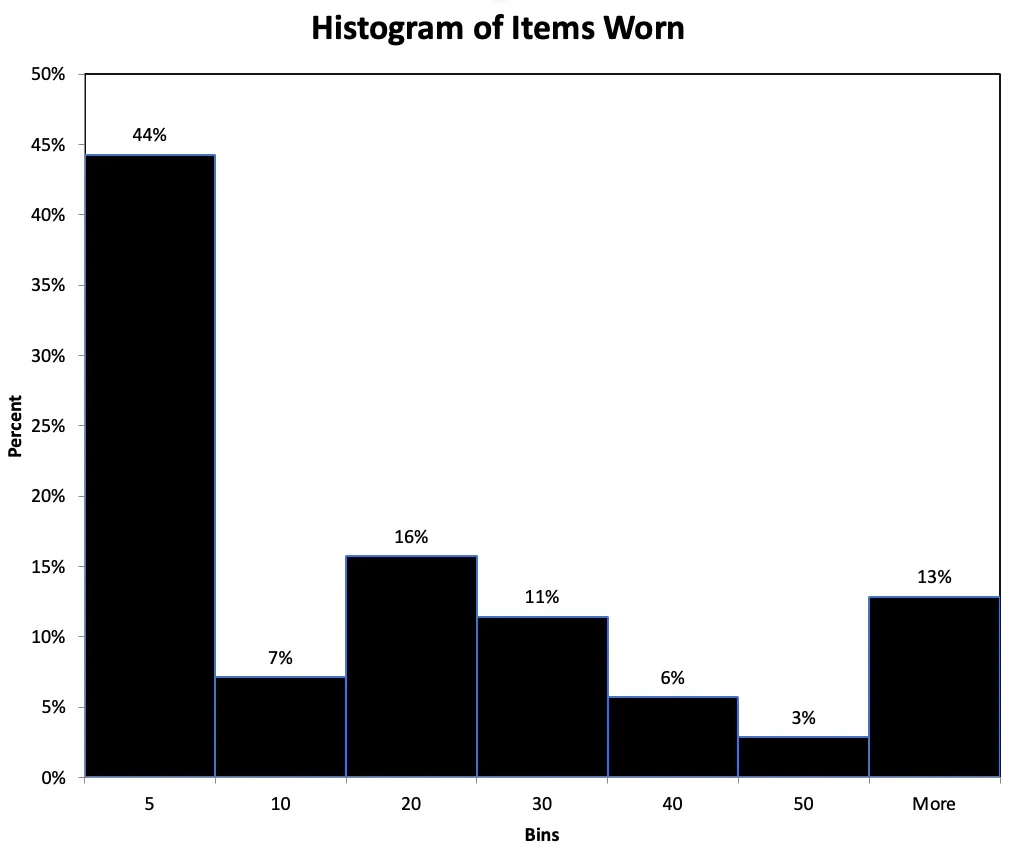In recent years, many men have turned into sartorial statisticians and used Google Spreadsheets to obsessively chronicle everything they wear — from brands to colors to how they mix and match component parts. But no one has done it quite like 35-year-old data analyst Andre Nader.
At the beginning of 2021, Nader, who maintains a Substack focused on personal finance and describes himself as a “very frugal person,” wanted to update his wardrobe while also understanding if spending more money on higher quality items was worth it. “For some reason, it really bothered me not knowing how many times I have used a specific shirt,” he wrote in his Substack post recounting his experiment. “I wanted to know how often I wore something, the cost per wear and when I last wore it.”
To do so, he developed a surveillance system using NFC tags, or the same chip technology built into credit cards that allows for touchless payments. He placed a bulk order for buttons with the tags built into them that he could then sew onto his clothes. “I timed myself sewing my first button,” he tells me. “It took me 20 minutes.” Considering he had roughly 60 items he wanted to track, it took at least “a few dozen hours” for him to finish.

Once the clothes were tagged, Nader created rows for each item using a program called CODA, which he describes as “a souped-up version of a spreadsheet.” Next, with the help of Apple Shortcuts, he made it so he could just tap the NFC button sewn onto a piece of clothing against his phone, and it would automatically keep track of it on the spreadsheet — no manual entry required. “Each article of clothing had its own unique ID that was hard-coded into the Apple Shortcut,” he says.
Nader explains he could immediately see how often he was wearing his Forever 21 sweatpants. “I felt really embarrassed seeing that I’d worn the same sweatpants four days in one week,” he says. Another thing that surprised him was how often he would wear the same T-shirts. “Even after I did laundry, I still went back to the same shirt,” he tells me.

All of this, however, did allow him to accomplish exactly what he set out to do — quantify how much he loved specific items. “There were a handful of mostly newly acquired shirts that made it into the weekly rotation,” Nader noted in his Substack post. “With seven shirts getting worn at least once in nearly 50+ percent of weeks they were owned. [It] was fascinating to see how color played a big part in wear rates as well. My theory here is simply that my household doesn’t own enough white clothing items so the ‘white load’ of laundry is bi-weekly versus weekly for everything else.”
Moreover, per all that sweatpants wearing, he wrote, “Knowing how often I wore them made me feel better about buying higher quality items that I normally would never buy. I am now the proud owner of three pairs of Vuori sweatpants/athletic pants/joggers.”
From a bigger-picture perspective, he continued, “Looking at a histogram of how often items were worn (excluding those worn 0 times), I was surprised at how much of what I own was worn five or fewer times. Having fewer things in the five or less bucket seems to be a big opportunity. While it might also be appealing to try and increase the number of items worn more than 50 times, I would need to be cautious at how I did that. For example 4/9 of the items with more than 50 wears are shoes. If I buy more shoes, it would likely lead to a decrease in the number of any individual shoe being worn more than 50 times.”

Speaking of shoes, Nader found that he was basically living in his L.L. Bean Wicked Good Slippers. “They were the number one most worn item across every category,” he explained in his post. “They were worn at least once in 60 percent of the weeks they were owned.” But more importantly to his thrifty way of thinking, they had by far the best return on cost-per-wear in 2021.
That said, even Nader isn’t impervious to an emotional purchase or two. After all of this obsessive chronicling, he was faced with the stark reality that his most expensive pair of pants — $250 Tellason raw denim jeans — were essentially just closet decoration. “The idea of having raw denim and having high quality that would last forever was super appealing,” he tells me. But he quickly learned that with raw denim you have to live in it before it becomes like a second skin. Subsequently, he says, “I never wore them — especially working from home.”
No matter the financial ramifications, though, he doesn’t have plans to relinquish them any time soon. Or as he put it in his post, “There were a number of items I still wanted to hold on to. Some for practical purposes: I’ll need dress shoes once every other year. Others for aspirational reasons: Sure I’ll use those exercise shirts more in the future. Those $200 pair of raw denim will eventually get worn.”
And if not, he says, they’ll still live on forever as advertised: “Forever unworn in my closet.”
